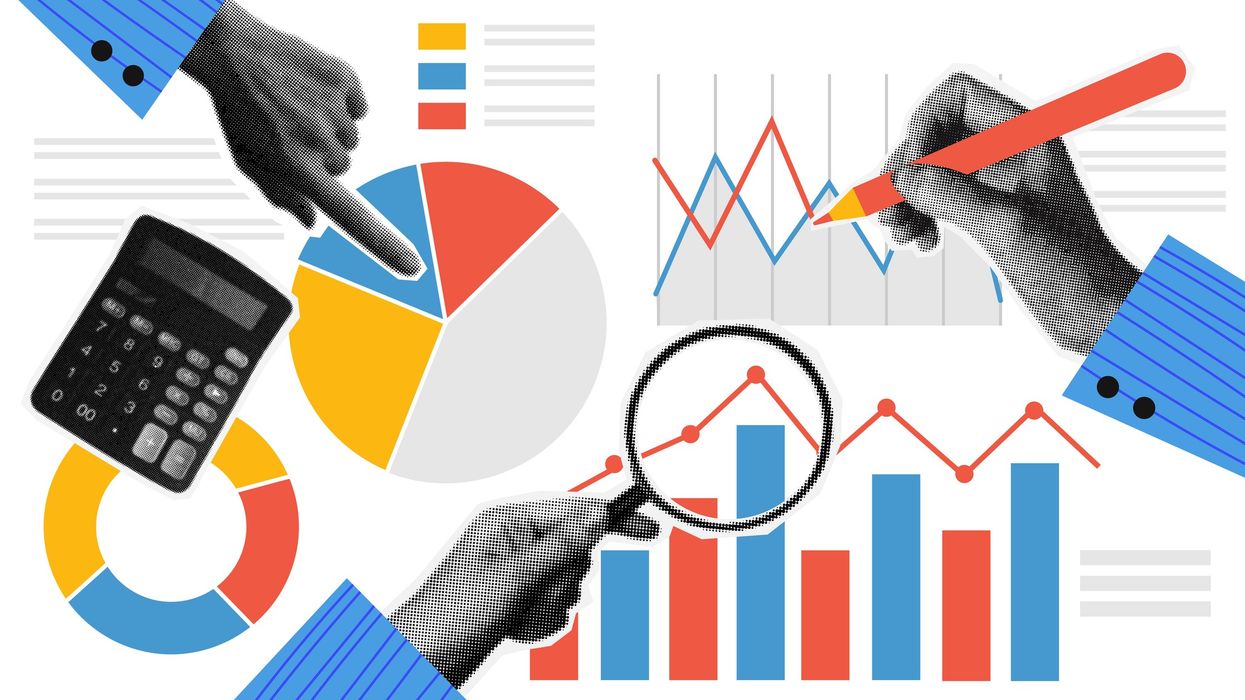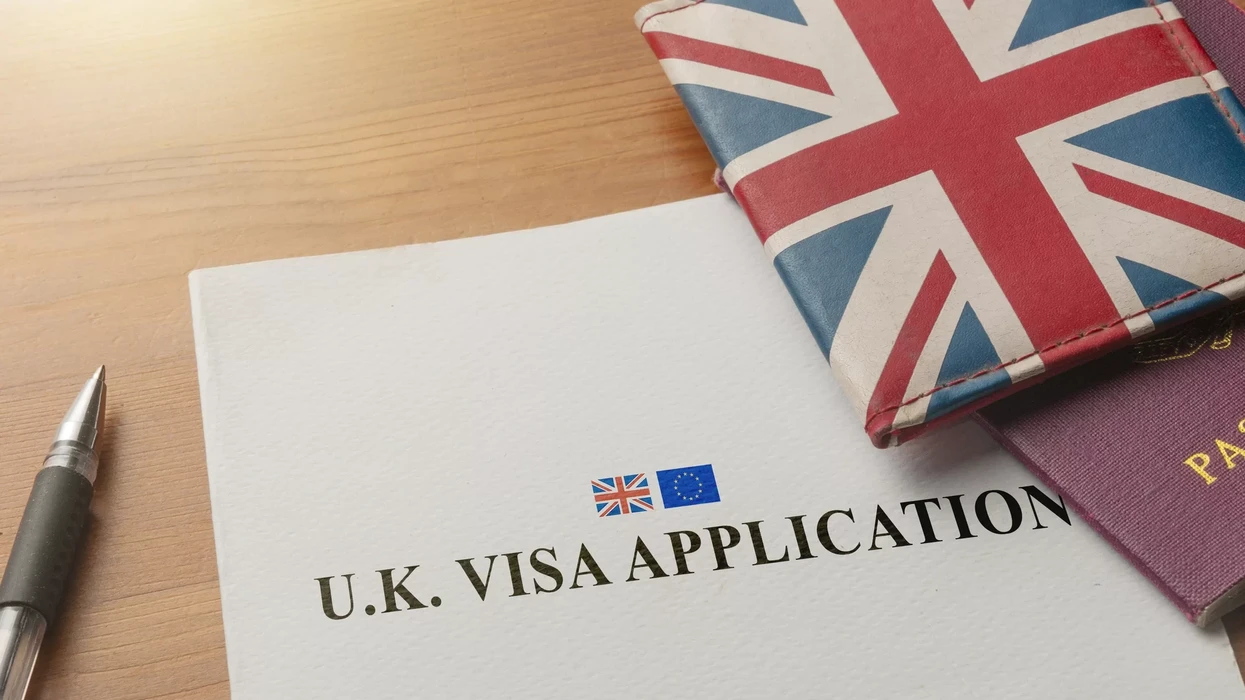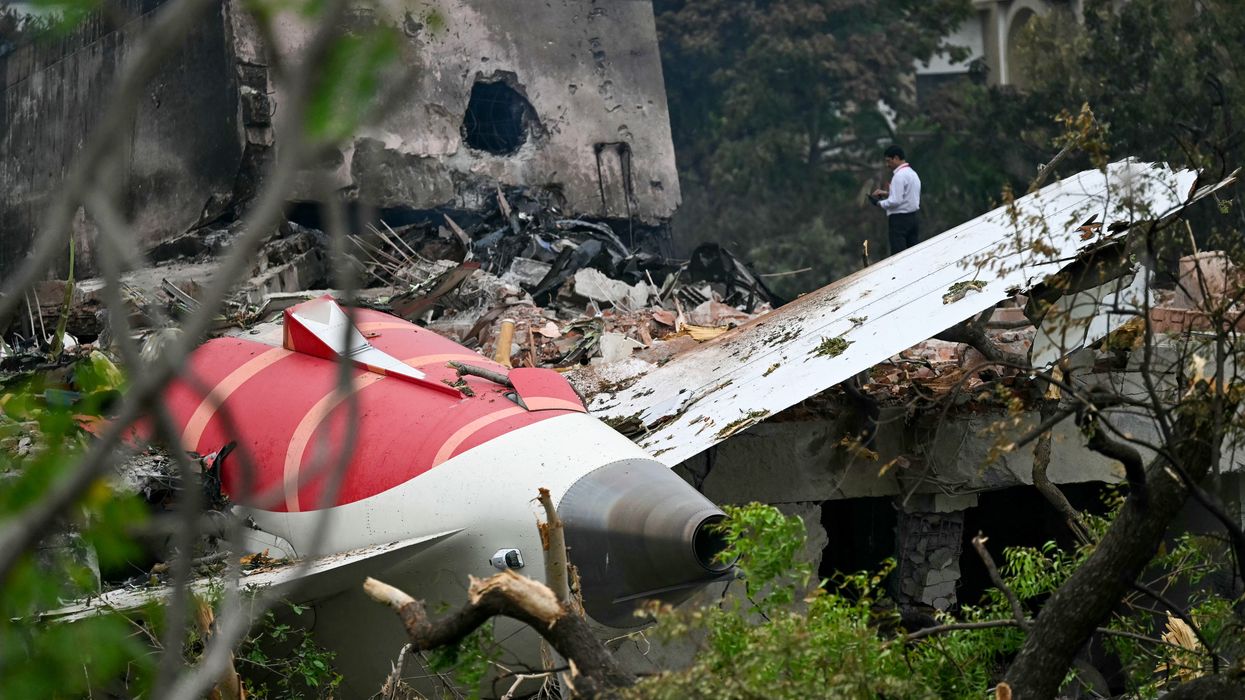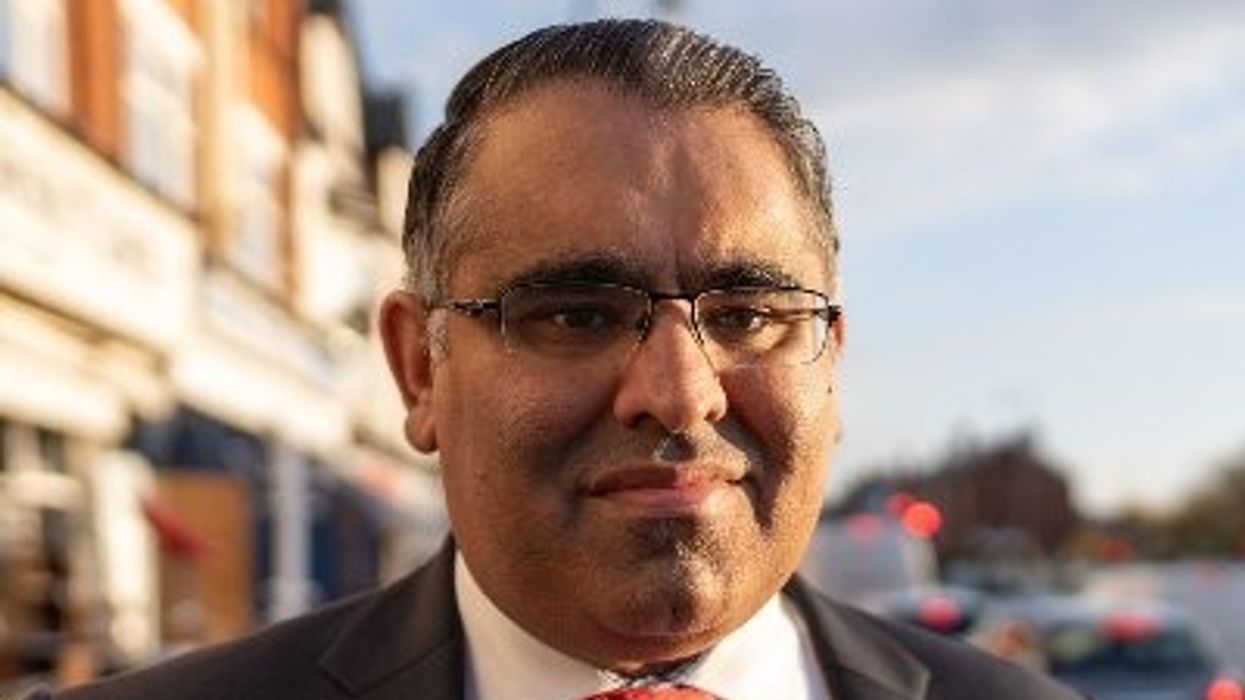Western Europe is looking to Lakshmi Mittal to rescue its steel industry.
Everyone agrees steel is a strategic necessity but will there come a day when Europeans will have to depend almost entirely on cheap imports from China?
The problem is that while making environmentally friendly, decarbonised steel is technically possible, the product is so expensive it cannot possibly compete with the stuff coming out of China.
And if western governments do not act soon to ensure a “level playing field”, either by giving subsidies or introducing tariffs to keep out imports from China, western Europe will no longer have a steel industry.
Is Lakshmi Mittal, executive chairman of ArcelorMittal, the man to ride to the rescue?
While Mittal keeps as busy as ever, the public facing role at the company has been handed over to son, Aditya, who is ArcelorMittal’s chief executive officer.
In 2024, ArcelorMittal’s net profit was $2.3 billion, which was a 52.2 per cent decrease from 2023. The company’s revenue was $62.44 billion, which was an 8.5 per cent decrease from 2023.
“Last year was challenging from a global economic perspective, but, despite this EBITDA per tonne at $130 is considerably higher than the five- year-average pre-Covid,” said Aditya.
But he added: “Looking to the year ahead, while inventory levels are low and apparent demand is expected to improve, our industry continues to be characterised by global overcapacity and we are supportive of policy to address this in our markets. Further action is particularly necessary in Europe, which was impacted by increased imports in 2024, further adding to the pressures on European manufacturing.”
Aditya emphasised: “It is critical that we see progress in 2025 both in providing necessary emergency relief and creating a policy environment that incentivises the investment required to accelerate decarbonization in Europe.”
Basically, father and son take the major decisions jointly.
ArcelorMittal describes itself as “one of the world’s leading integrated steel and mining companies with a presence in 60 countries and primary steelmaking operations in 15 countries.
“It is the largest steel producer in Europe, among the largest in the Americas, and has a growing presence in Asia through its joint venture ArcelorMittal/Nippon Steel India.”
“ArcelorMittal sells its products to a diverse range of customers including the automotive, engineering, construction and machinery industries, and in 2024 generated revenues of $62.4 billion, produced 57.9 million metric tonnes of crude steel and, 42.4 million tonnes of iron ore,” the company went on.
“Our purpose is to produce smarter steels for people and planet. Steels made using innovative processes which use less energy, emit significantly less carbon and reduce costs. Steels that are cleaner, stronger and reusable. Steels for the renewable energy infrastructure that will support societies as they transform through this century. With steel at our core, our inventive people and an entrepreneurial culture at heart, we will support the world in making that change.”
In fact, India is about the brightest spot in an otherwise bleak future. To add to the joint venture with Nippon Steel in Hazira in prime minister Narendra Modi’s home state of Gujarat, Mittal is now considering expanding in India.
Mittal father and son were at the World Economic Forum at Davos in January where they met a number of world leaders.
Notable among them was N Chandrababu Naidu, chief minister of Andhra Pradesh, who confirmed that ArcelorMittal and Japan’s Nippon Steel had recently made “a landmark investment for a 17.8-million-ton integrated steel project in Anakapalli. This initiative stands out as one of the largest greenfield projects in recent times.”
Mittal has always taken the view that steel is of strategic importance. “If you take a picture of any cityscape, and then if you were to look at that picture and remove steel from that picture, there wouldn’t be much left.
“You don’t buy steel in a shop, but it’s in pretty much everything you come across – in transport, cars, rail, building, construction and buildings, the houses we live in, the buildings we work in.
“If you think about the renewable energy revolution, all the windmills are made of steel. Solar panels all have steel frames. Right down to the humble paperclip, steel is everywhere and in all walks of life. It is critical to the transition to net zero. There isn’t really another material like it in terms of its flexibility, its durability, its versatility.”
He has mixed feelings about the 25 per cent tariffs President Trump was quick to introduce, arguing western Europe may have to do something similar. “If you go back to Trump and tariffs, it’s interesting, isn’t it, that the first tariffs that Trump has applied are on steel and aluminium. And the reason for that is because steel is viewed as a strategic industry around the world.”
Lakshmi Mittal was born in Sadulpur, Rajasthan, on June 15, 1950, but the family settled in Calcutta (Kolkata) which then, as now, had a flourishing Marwari business community. His father, Mohan Lal Mittal, had a relatively modest steel business.
Mittal moved to Indonesia in 1976 and emigrated to Britain only at the end of 1995. But he hit the headlines in the summer of 2006 when his Mittal Steel made a hostile and ultimately successful bid for Arcelor, a European giant with a big base in France.
Aditya was born in India on 22 January 1976, attended Jakarta International School, and obtained a bachelor’s degree in economics in 1996 from the Wharton School in the University of Pennsylvania in the US. He met his wife Megha, who has since carved out her own career in fashion, at Wharton.
Given the 40 per cent inheritance tax that the chancellor Rachel Reeves is imposing on non-doms, some people who know the Mittals are wondering whether it makes sense for them to
keep London as their main home. It is known that Lakshmi Mittal has retained his Indian passport. It also has to be borne in mind that he lives in one of the grandest mansions in Kensington Palace Gardens which he bought for £70m in 2004 from the then Formula One boss, Bernie Ecclestone. Lakshmi and his wife, Usha, who loves gardening, have to make do with 12 bedrooms, parking space for 20 limousines, a basement swimming pool and marble, marble everywhere.
Mittal spends a big part of the year travelling to ArcelorMittal plants and holding private meetings with world leaders. He does so in his private jet, which makes it possible for him to “do three countries in one day”.
Aditya had a glamorous wedding in Calcutta where the Victoria Memorial Hall (which has a statue of Queen Victoria at the front gates) was hired for the reception. Mittal’s daughter, Vanisha – she is on the board of ArcelorMittal – had an even more lavish wedding. Her father apparently spent £30m on renting the Palace of Versailles when she married the businessman Amit Bhatia in 2004. Aditya has two children, Vanisha three, and Mittal wants to spend more time with his grandchildren. All these factors will determine whether Reeves has made it impossible for many senior Indian tycoons to remain in the UK. And in the past, Mittal has made handsome donations to the Labour party – £125,000 in 2001 and £2m in 2005 – but that was when Sir Tony Blair was prime minister.
Mittal is a shy man, who goes out of his way to avoid personal publicity. But he and his son were high profile last year when ArcelorMittal was one of the major sponsors of the 2024 Paris Olympics and Paralympics. The company made 2,000 Olympic torches from scrap metal at its French plants in Châteauneuf, Florange, and Woippy. In addition, it provided the five giant Olympic rings – painted blue, black, red, yellow and green – that were put up on the Eiffel Tower and looked “Spectacular” lit up at night. And for the Paralympics, it manufactured the Ajitos, symbol of the movement and the athletes, which were erected on the Arc de Triomphe’s eastern façade.
What is of greatest concern now is what Mittal considers the existential threat to the European steel industry. People in the industry are urging him to rise to the challenge and use his influence as its number one leader.
Mittal has urged European governments to act before it is destroyed by cheap imports from China.
“My message is clear,” he declares. “Europe should not walk away from its industrial heritage, handing over future industrial growth to other regions. There is considerable investment into the green transition waiting to be quickly activated, once the requisite policy clarity is achieved. If the right decisions are taken, Europe can be at the vanguard of the technology over the next 50 years. Don’t let that opportunity pass.”
He recalls: “Seven years ago, I advocated for the introduction of a carbon border tax — to ensure a level playing field between European industrial producers bearing decarbonisation costs, and cheaper imports that did not. You might assume I am therefore satisfied that a carbon border adjustment mechanism was subsequently adopted by the EU, and is now in its testing phase, with full implementation starting in January 2026.
“Unfortunately, I am here not to raise the cry of victory, but to sound a voice of alarm. As it stands, the CBAM (Carbon Border Adjustment Mechanism) is inadequately designed and,
unless significantly strengthened, a critical mechanism to enable Europe to achieve its stated goal of ‘decarbonising and industrialising at the same time’ will fail.”
The CBAM is a piece of European Union legislation aimed at EU imports of carbon-heavy goods – for example, cement, iron, steel, aluminium, fertilisers, electricity, and hydrogen.
“The sober truth is that the European steel industry has never been so challenged, caught as it is between the pincers of decarbonisation costs and the fallout from severe overcapacity, especially in China, which has resulted in increased imports,” argues Mittal.
He goes on: “Steel production in Europe has fallen by nearly a third since the financial crisis, with jobs down by a quarter. Demand has not recovered to pre-Covid-19 levels, which combined with high energy costs and elevated imports has led to margins at a level last seen during the pandemic.
“The negative impact on profitability comes at a time when the industry is expected to make final decisions on decarbonisation projects that will cost billions of euros, investing in technologies — think green hydrogen — which are not economically viable today.
“You might argue this is free trade in action. I would say the trade might be free, but it isn’t fair. Enabling fair trade takes on a new dimension when Europe is the only major market with a cost on carbon. When Europe decided to take the lead on implementing climate policy — a noble ambition — it was assumed that everyone else would follow. That has not happened, and Europe’s competitiveness in globally-traded manufacturing sectors like steel is declining.”
He says: “The current dynamic is bad for both Europe and the planet. A shrinking industry is incompatible with the continent’s strategic priorities, captured in the ‘clean industrial deal’ outlined in July last year. It will reduce European emissions, but not in a way that helps the planet as primary steelmaking relocates to places where decarbonisation matters less. That is not solving the problem.
“It need not be this way — I am convinced Europe can retain a competitive and innovative steel industry. But it must make a choice. Does it want to produce iron and steel in the continent? Or does it prefer to import it, potentially with a higher carbon footprint? This fundamental question must be answered now.
“If there is genuine commitment to maintain a domestic industry, the combined policy landscape must be tackled together to form a supportive environment that enables European steelmaking to decarbonise and thrive. The lack of this led to our announcement last week explaining why we are not able to take final investment decisions on projects to replace blast furnaces with lower-carbon technology at this point in time.
“The first challenge is to urgently address imports. Intervention is required so that European steel is better protected, as in the US and Brazil where the industry is considered strategic. Emergency trade measures would be a strong first signal to address this.
“Second, ensure that the CBAM truly achieves its purpose.”
Mittal concludes: “I don’t pretend this is straightforward, but the challenge is political as much as mechanical. With new leadership in Brussels, and both the clean industrial deal and the steel and metals action plan under development, the time to act is now. The decisions taken in the next 12 months will determine the future size and shape of the European steel
industry. Failure to act will only result in the continued decline of iron and steelmaking in the continent.”
Perhaps it is cometh the hour, cometh the man. Mittal has put forward the same views in similar newspaper articles and speeches – which he makes only rarely – over the years.
Mittal has come to be compared to Andrew Carnegie (1835-1919), the Scottish American industrialist who led the expansion of the American steel industry in the late 19th century. This is a bit like any batsman being compared to Bradman.
Tim Bouquet, co-author, with Byron Ousey, of Cold Steel: Britain’s Richest Man and the Multi-Billion-Dollar Battle for a Global Empire, has written: “In the world of steel—until recently seen as a sunset industry dominated by politicians and unions—he casts a longer shadow than any man since Andrew Carnegie. Mittal’s story is in many ways similar to that of Carnegie.”












